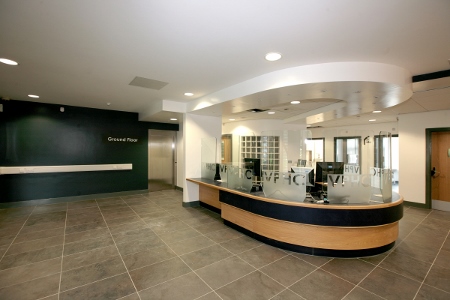In this article, Andrew Darke, managing director of property at Assura, explores how to develop a primary care infrastructure that will cater for an ageing population
With factors such as evolving medical resources, a primary care funding freeze, and an ageing population changing the demands of general practice, the NHS is now reassessing its models of primary and secondary care
The relationship between general practitioners and their elderly patients is a complex one, with localised care being as much about community and wellbeing as it is about treating active health conditions.
With factors such as evolving medical resources, a primary care funding freeze, and an ageing population changing the demands of general practice, the NHS is now reassessing its models of primary and secondary care.
From a design perspective, this has meant that GPs and healthcare developers throughout the country have needed to shift their focus to anticipatory design, always remaining one step ahead of the older patient’s needs. The advancement of modern technologies and extensive research into age-related conditions such as dementia has meant that this is achievable, but requires an intelligent, pro-active approach from the primary care sector and its partners.
When designing a new primary care centre, or contemplating improvements to an existing practice, we must interpret the impact that diminished senses as a result of age can have on a patient’s navigation of a health centre
Much of this is building upon what most general practices already take into consideration: the comfort, dignity and privacy of patients. When designing a new primary care centre, or contemplating improvements to an existing practice, we must interpret the impact that diminished senses as a result of age can have on a patient’s navigation of a health centre.
This means elevating some of the foundational design principles in primary care design to be even-more careful: making sure that diagnostic rooms are warm and well-lit while still being private is a key architectural focus, and is increasingly supported with integrated temperature controls for patients that require further warmth. We are also seeing more inclusion of bio and SAD lights as we work with the psychological as well as physiological impact of sensory limitations.
As the NHS moves more services to general practices from hospitals; we are also seeing primary care taking its design cue from its larger neighbours, with illuminated pathways and handrails now considered to be as necessary as they would be in larger secondary centres.
Seating is increasingly being designed to support, as well as offer comfort, particularly at a time when the NHS is seeking to incorporate social care and wellbeing support services in its neighbourhood centres. Older patients have traditionally sought meetings with their GPs for support that goes beyond basic medical enquiries, which as a community we need to take seriously, designing comfortable spaces for those needing non-medical attention to their wellbeing.
As smart design develops, it does so in conjunction with the wider landscape of primary care development, as the NHS continues to prioritise the integration of different primary services in consolidated neighbourhood centres. Within this environment, the relationship that elderly patients have with their GP remains one of the most fundamental priorities of the NHS, with an ageing population still relying on an increasingly-pressurised primary care community.
As the NHS moves more services to general practices from hospitals; we are also seeing primary care taking its design cue from its larger neighbours, with illuminated pathways and handrails now considered to be as necessary as they would be in larger secondary centres
The development of functioning neighbourhood centres is the most-effective means of sustaining a balance between supporting an ageing population and meeting the cost-efficient and environmentally-conscious NHS guidelines. By having an ‘everything under one roof’ approach wherever possible, GPs can anticipate the needs of their older patients, and ensure that they receive not only the correct treatment, but the suitable support that makes primary care centres a source of solace for the ageing community.





